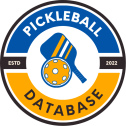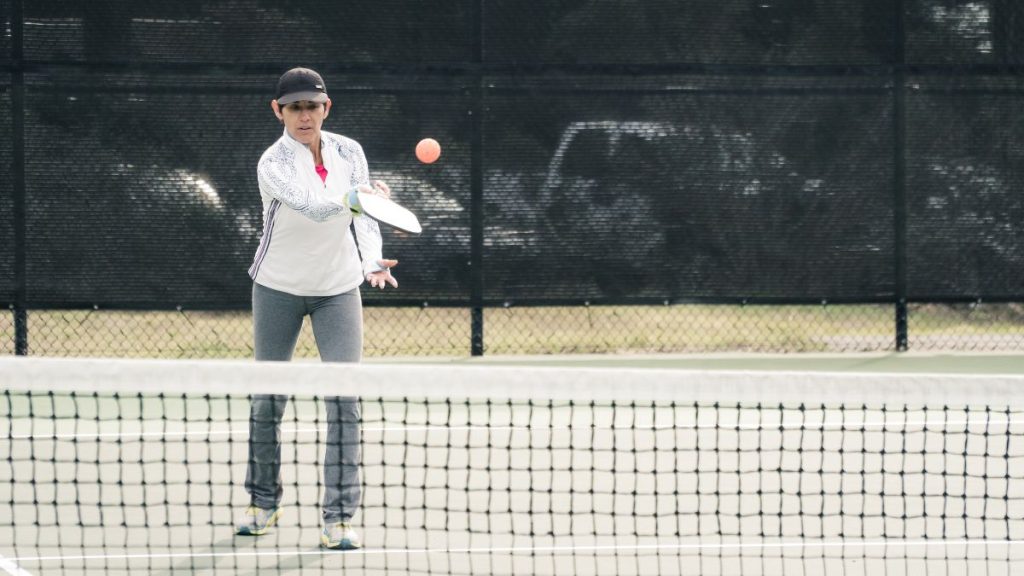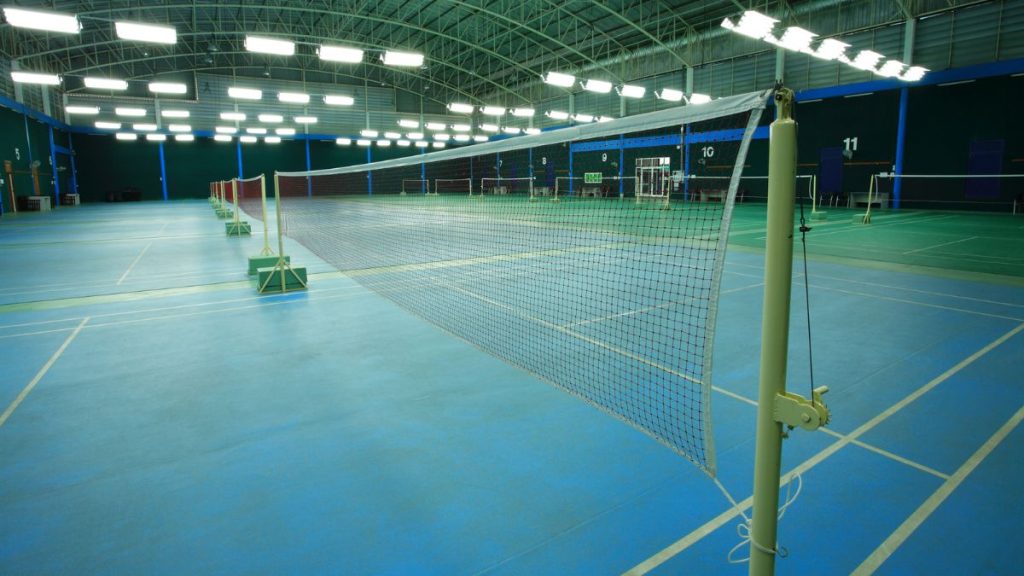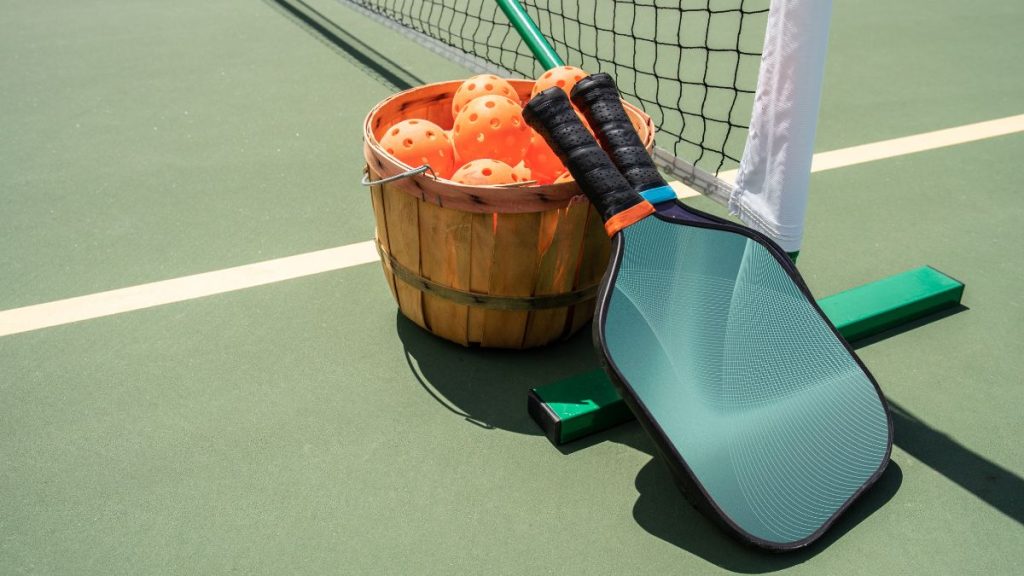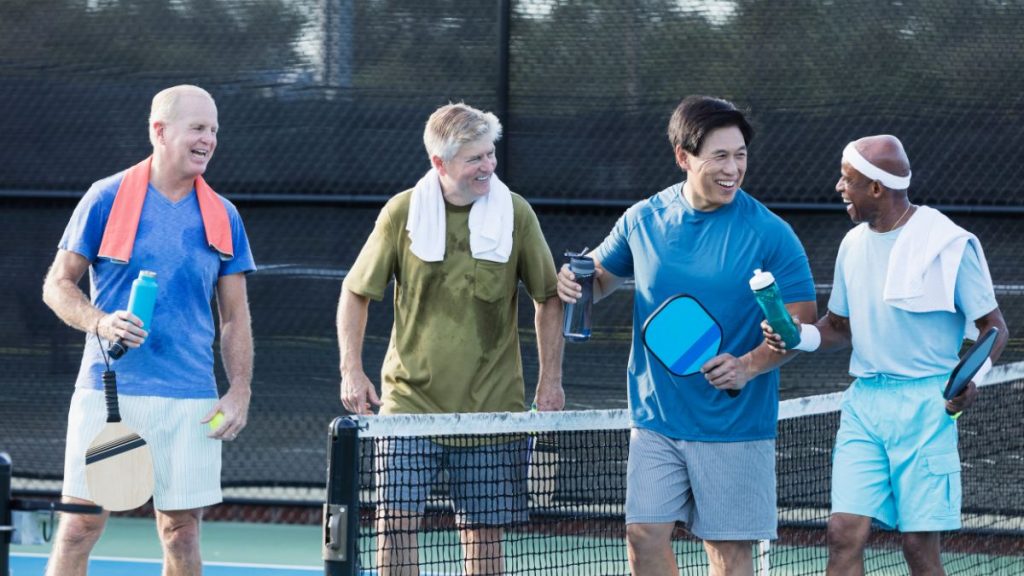In playing pickleball, you can only score when you are the one doing the serve. Hence, it is very important that you learn the basics of pickleball serving and how to develop a strong serve.
Aside from scoring out of service, there are numerous other reasons why learning how to serve in pickleball is essential. In this article, we will learn the 4 different types of pickleball serves, their pros and cons, the serving rules, and more.
Let’s get started!
What Are The 5 Serving Rules In Pickleball?
Before diving into the different types of pickleball serves, let’s be familiar first with the 5 basic serving rules in pickleball. Service is very important because only the serving team can score.
In pickleball, here are the 5 basic serving rules:
- The server must serve underhand.
- The paddle’s contact with the ball should be done below the waist, also known as the navel.
- The serve must be initiated so that at least a foot is not over the baseline. The foot should touch the baseline or the court when the ball is struck.
- The ball should land on the opposite diagonal side of the server’s court.
- The server is only allowed once to serve the ball unless a let serve has been declared.
What Are The 4 Different Types of Pickleball Serves?
Now that you’ve learned the basic rules of serving, we can discuss the 4 different types of pickleball serves to elevate your play. It’s always good to keep your opponent guessing your moves, so learning different services is good.
The 4 types of pickleball service include the power serve, centerline serve, kitchen corner serve, and lob serve.
Let’s start discussing each type!
The Power Serve
The power serve is your best option if you want to catch your opponent off guard. A low, fast serve forces a quicker reaction from the receiving player. The power serve is also called the rip serve, or the drive serve.
How To Do The Power Serve?
What makes a good power serve is your follow-through. Since you want to make a low and hard service, you should ensure that you position your body concisely and relaxedly. What you should do is rotate your hips finishing with your paddle up across your opposite ear.
You should avoid relying too much on your wrist, not your whole body. Another mistake most players commit when doing power serves is their tight grip on their paddle.
In this type of service, make sure that you have a relaxed grip on your paddle. On a scale of 10, a middle grip score will already do. The additional tension created by the tight grip will already cause a change in the ball’s trajectory and probably result in a fault.
When To Best Use A Power Serve?
Generally, it’s always the best time to use a power serve, especially if you want to rattle your opponent. But if you’re the type of player who wants to change serves from time to time, here are the best situations for you to use the power serve:
- If you notice that your opponent plays right in the front of the baseline;
- If you notice that your opponent tends to take a step forward whenever you are serving; and
- If you notice that your opponent leans leftward or rightward.
Moreover, you can also decide to use a power serve when you’ve already served a few slow serves. This will automatically confuse your opponent since they expect a slow ball.
What Are The Pros And Cons Of Using A Power Serve?
The main advantage of using a power serve is that it effectively shocks your opponent. If properly timed, a power serve can already guarantee you a point or even a weak counterattack from your opponent.
However, there are also some disadvantages to using a power serve. Since it’s low and loaded, the tendency to go straight to the net is high. Moreover, if your opponent uses a strong force to receive it, the ball will come to you quickly, and you’ll have difficulty adjusting.
The Centerline Serve
Your opponents often read your services and anticipate where you will bring them. Hence, serving the ball right into their centerline instead of your regular serve will throw them off guard.
How To Do The Centerline Serve?
Centerline serve brings the ball right into the centerline of your opponent’s court. You must direct your body as close as possible to the centerline to do this properly. Take note that you should never go beyond it.
A quick and effective tip would be swinging your paddle the way you’ll swing it for your normal serves, then changing the force when it hits the ball to direct it to the centerline of the opponent’s court.
Compared to the power serve, the centerline serve will take more practice time to master it.
When Is The Best Time To Do A Centerline Serve?
A centerline serve can be best used when:
- You notice that your opponent is always right beside the corner;
- You notice that they play right in the baseline’s front; and
- You notice that your opponent tends to move right into the corner when you serve.
What Are The Pros And Cons Of Using A Centerline Serve?
Again, using a centerline serve’s main objective is to confuse your opponent throughout the game. If you’re using a centerline serve, the opponent will tend to realize that the ball will be coming their way in broader service ranges.
The main disadvantage of using a centerline is that you have to be as close as the centerline when you serve, and the opponent can already guess that you’re doing a centerline serve.
Kitchen Corner Serve
A kitchen corner serve means serving the ball outside your opponent’s kitchen area. The tendency is that your opponent will move far away from the court, and it will be a perfect opportunity for you to maximize the third shot since that can’t go back quickly in position.
How To Do The Kitchen Corner Serve?
Positioning is very important in doing a kitchen corner serve. You want to be in the far corner of the serving area. Then, softly hit the ball so it will land past the kitchen corner of your opponent’s court.
Moreover, it would help if you had a light yet firm control over your paddle when doing this serve.
When Is The Best Time To Do A Kitchen Corner Serve?
Do a kitchen corner serve when:
- You notice that your opponent has a slow reaction time;
- You notice that your opponent always positions himself in the centerline;
- You notice that your opponent plays near their baseline; and
- You want to catch your opponent off guard.
What Are The Pros And Cons Of Using A Kitchen Corner Serve?
The main advantage of doing a kitchen corner serve is that it’s very difficult for the opponent to react quickly. Plus, if they bring the ball back to you, it will be hard for them to position themselves properly because they’ve been off their court.
However, a kitchen corner serve is among the hardest serves to master. You must hit the ball softly to be right in the kitchen corner, yet you must do it with enough firmness to go past the net.
Lob Serve
Lob Serve, also known as sky serve, is another way to frustrate your opponent. In this service, you want to serve the ball as high as possible into your opponent’s side. This will make them lose their focus and can, most of the time, be frustrating.
How To Do The Lob Serve?
To the lob serve, you should position your paddle as deep as you can, then hit it upwards to create an arc and push your opponents to the back of their court. Take note that when hitting the ball upwards, you should not do it above your navel because that would be an automatic fault.
When Is The Best Time To Do A Lob Serve?
First, if you want to change the game’s flow, a lob serve can help you with time. Now, the following are the best times when you can execute a lob serve:
- When you notice that your opponent is playing more forward;
- When you notice that your opponent is quick and aggressive on his feet; and
- When you want your opponent to be frustrated.
What Are The Pros And Cons Of Using A Lob Serve?
Lob serve is among the easiest types of pickleball service you can master. Plus, it can always change the mood of your opponent. They must move toward the back and bring the ball to you in an awkward position.
The disadvantage of using a lob serve is that it’s prone to a fault service. Also, if you are against a seasoned tennis player, this type of serve is very easy for them to handle, and they can bring it back to you in a hard way for you to recover.
Can You Serve Overhand In Pickleball?
You cannot serve overhand in pickleball. All services must be handled underhand, and you must hit the ball below your waist or navel. If you do your serve in a manner that goes beyond your waist or navel, the serve will be considered a fault.
What’s An Illegal Service In Pickleball?
These are the instances where your service is considered illegal in pickleball:
- You serve the ball overhand.
- You serve the ball above your waist or navel.
- The head of your paddle goes above your wrist.
- You serve the ball after the 10-second time period.
- The serve landed in the kitchen area.
- You stood in the baseline.
- You did not hit the ball in the adjacent area of your court.
Final Thoughts
Pickleball service is essential if you want to win a pickleball game. Only the serving team can score, so you must get the opportunity to serve every time.
There are different types of pickleball service that you can try, such as the power serve, centerline serve, kitchen corner serve, and lob serve.
Mastering different types of services will make your gameplay more confusing and challenging for your opponent. Practicing at least 3 of these services can give you a greater advantage during the game.
